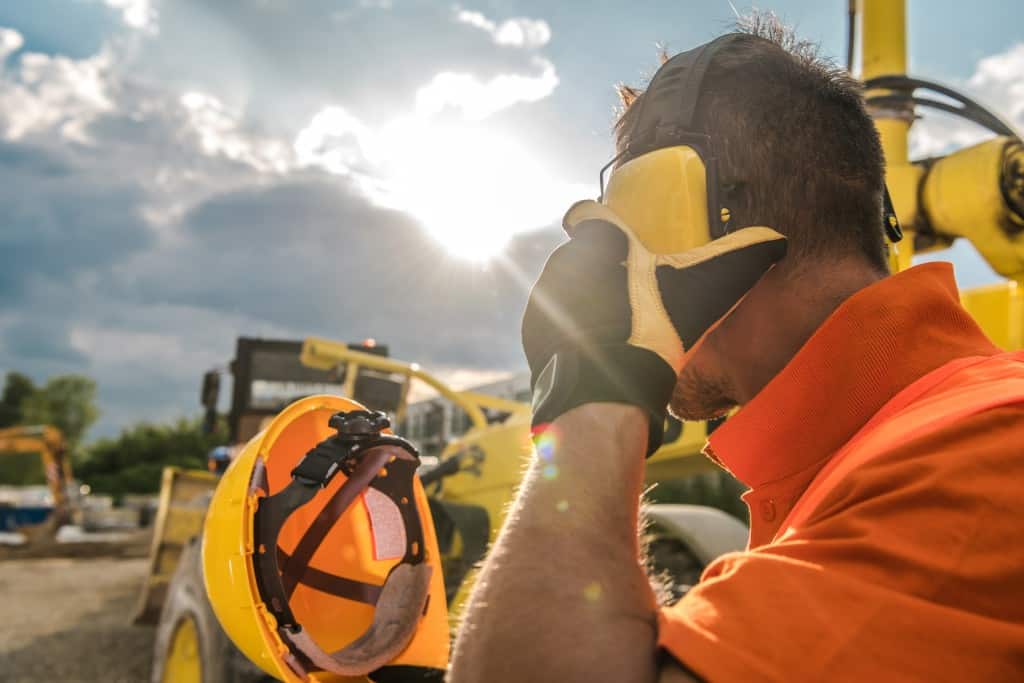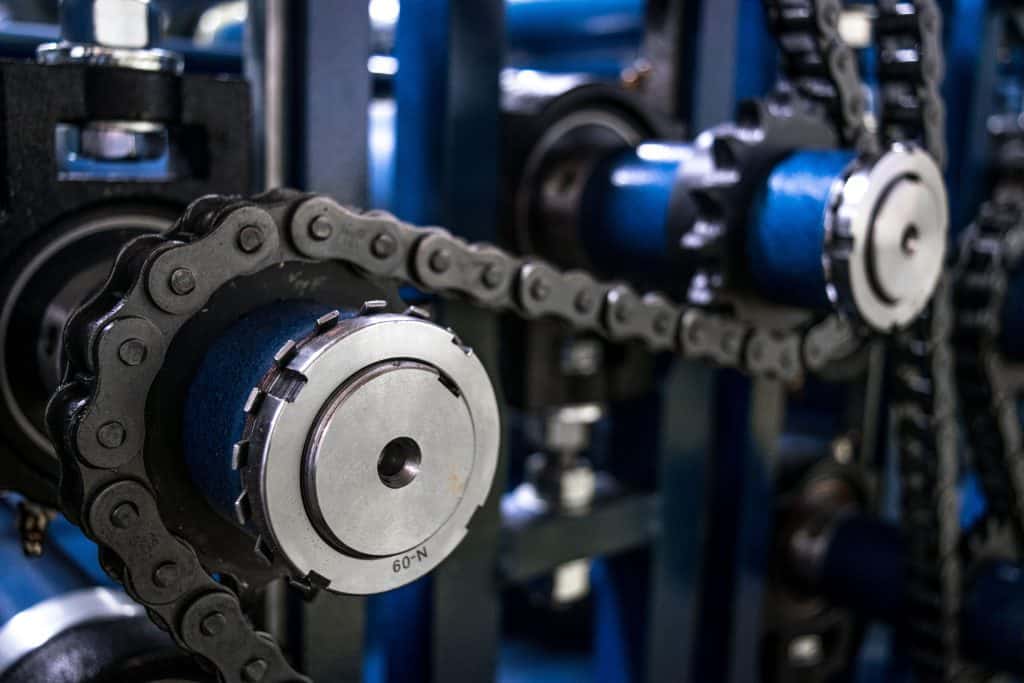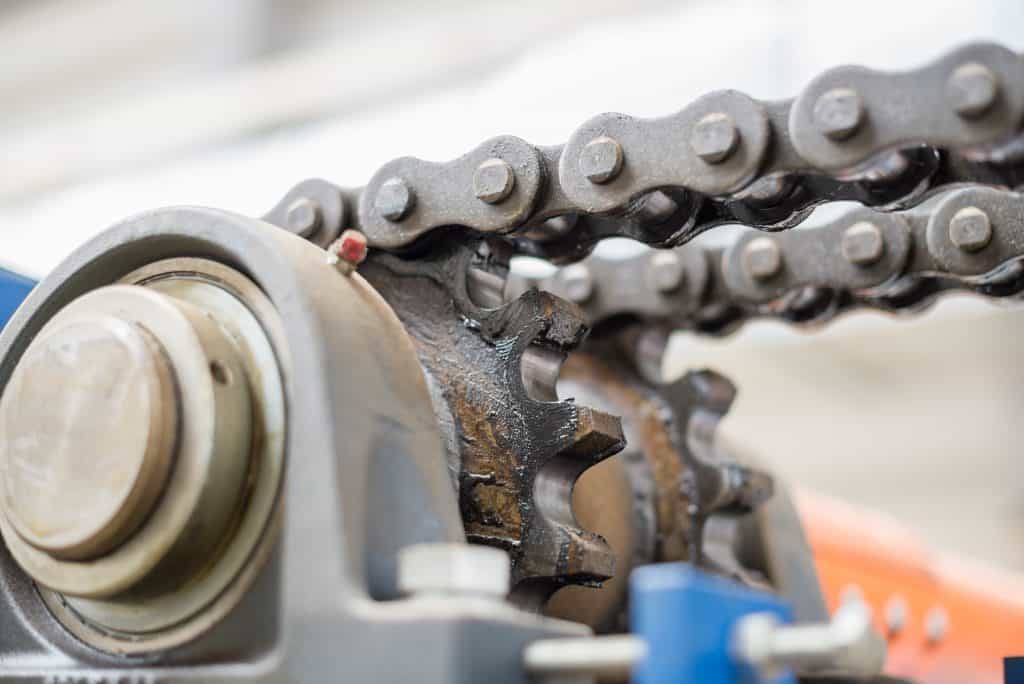Roller Chain Failure: Causes and Strategies for Prevention

No one wants catastrophic roller chain failure. It’s disruptive and costly to halt operations while replacing your roller chain. Unfortunately, though, this is a problem we occasionally have to handle.
There are three primary causes of chain breakage. When the driven load exceeds the chain rating, your chain is at risk of breaking. This issue is relatively easy to avoid during the design phase. Roller chains also break due to fatigue and the occasional accident. Fatigue can be difficult to spot. Accidents are (by their nature) hard to predict.
Let’s explore a few safety precautions you can take to limit the effects of fatigue and prevent accidents before they occur.
An ounce of prevention is worth a pound of cure
The first line of defense for roller chain failure is a well-designed drive. Crunch the numbers and confirm the chain (really every piece of the drive) can handle the prime mover’s capacity. Doing this should prevent outright chain breakage.
Begin by examining the service factor of your drive. A service factor is created by including the type of driven equipment, prime mover, duty cycle, and load severity of the drive. By giving any combination of these factors a numerical value during the design phase, it allows service lives to be equalized through the strength of the components selected. The Lynx Chain catalog will walk you through both selection and implementation.
Requiring a chain to move too large a load will result in failure. Specifications that need consideration include average tensile strength, minimum ultimate tensile strength, and max working load. Tensile strength tests measure the load required to break a chain. Average tensile strength is the average weight of the loads that broke the chain during repeated tests. Minimum ultimate tensile strength is the smallest load at which a new chain broke. Ultimate or minimum ultimate tensile strengths don’t have to be met for roller chain failure. Repeated overloads at or near tensile limits will be enough to set the chain on a course to failure.
Max working load, it could be argued, is the most important measurement. It is the largest load a chain is designed to handle (in normal conditions) without concern for fatigue failure. Take into account any extreme temperatures, humidity, or other conditions that make your location abnormal. These have adverse effects on the load roller chain can handle.
Asking your chain to do more work than it can handle will cause roller chain failure. Prior planning can prevent these outright breaks from happening. However, preventing fatigue can be a bit trickier. The process of fatiguing a chain takes longer, so causes are more difficult to spot.
Consider horsepower limiting factors
The horsepower capacity of your roller chain is limited by different factors depending on the RPM of the small sprocket. Link-plate fatigue, roller-bushing impact fatigue, and galling between the pin and bushing will occur in that order. When a roller chain is rated for a given horsepower capacity, this is taken into account. The rated horsepower capacity is the lowest capacity of the chain during testing. Make sure your roller chain is operating at or below rated horsepower capacity.

Proper chain installation
Poor installation practices will increase the rate of fatigue. Installation requires several steps. Approach them carefully and thoroughly. Safety precautions are always the first step to any installation or maintenance process. We recommend you examine each part for wear and replace it if necessary.
For chain installation, it’s also important to make sure to align the shafts and sprockets. Check multiple points along the respective shafts and make sure they are equidistant. As the chain drive comes together during assembly, remember to factor in the use of connecting or offset links. These are easy to overlook during drive design, and yet if used, they become the weakest section in a strand of chain. Be sure you take them into account when determining the maximum load of your application.

Is your chain well lubricated?
Lubrication is essential to keeping your chain in good condition. Unlubricated connections within your drive will increase friction and quickly lead to fatigue. The lubrication method must change as speed increases. Higher speeds require more lubrication at the pin-bushing connection.
Use a high-quality, non-detergent, petroleum-based oil. Heavy oils and greases are too stiff to lubricate all chain surfaces appropriately. Maintain an oil film between the pin, bushing, and roller.

Methods of lubrication can vary widely, but there are a few superior options. Pump or stream lubrication will do the most thorough job of oiling all critical surfaces. Oil-bath or slinger-disc lubrication can also be an effective method as well. All of these require leak-proof casings to operate, but the results will be so far and away from what you could accomplish with manual lubrication, your chain may just thank you.
Grease lubrication is possible, but not recommended. If required for your application, limit the chain speed to less than 13 feet/second. For proper operation, soak the chain in hot, liquid grease until no air bubbles rise. Repeat at regular intervals.
Is it time for maintenance?
Regular maintenance keeps your chain from becoming prematurely fatigued. Ideally, you will inspect the drive after the first 100 hours of operation. Check for chain elongation, the functionality of your chosen lubrication method, and any other signs that the chain is not properly aligned – such as wear on the inside of the side plates.
After the initial inspection, most drives require maintenance checks at 500-hour intervals. Inspect the chain for excessive sag. Chain sag should never exceed 4% of the center distance of the sprockets.

The chain connection must be given attention as it is the weakest point in the chain, and sprockets must also be checked for wear. As a general rule, your sprockets should be replaced with every third chain replacement.
Expect the unexpected
Accidents are impossible to control but can be mitigated with a few safety precautions. First, use an appropriate chain guard. Ideally, a leak-proof casing will give the chain added protection and assist in maintaining a high level of lubrication if required. A guard will also prevent things from falling between the chain and sprocket, which could cause a catastrophic failure.

Overload Safety Devices (OSDs) can also prevent costly and dangerous breakdowns. OSDs incorporate torque limiters, which keep equipment from being overloaded. They disengage when reaching a set maximum load. Essentially, this allows the drive to slip until the impediment has been removed.
Regular maintenance and proper installation go a long way in preventing accidents. When your roller chain is well lubricated, within the chain’s design capacity, and not worn, it just works better. Chains in good condition are less likely to fail suddenly or cause accidents.




